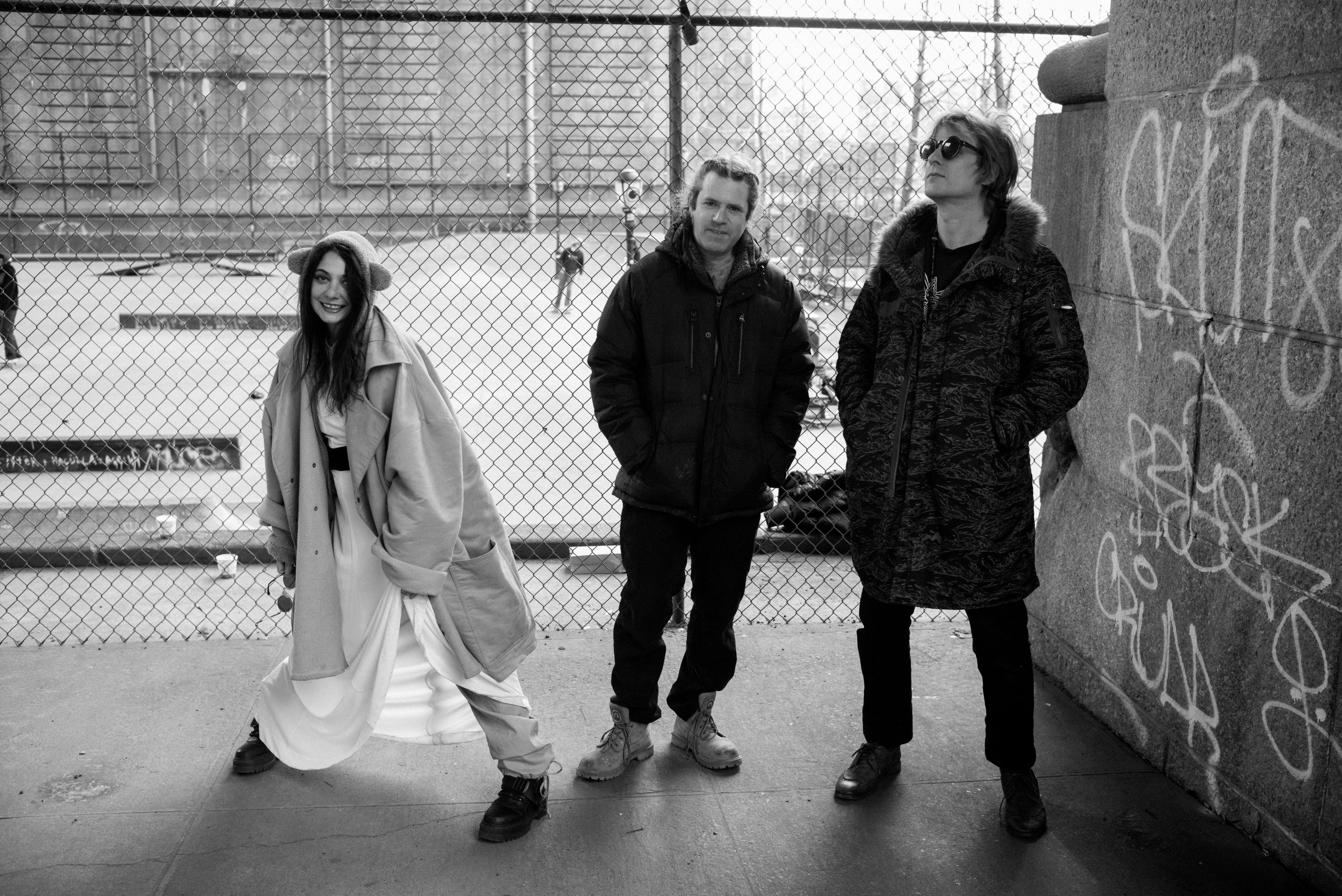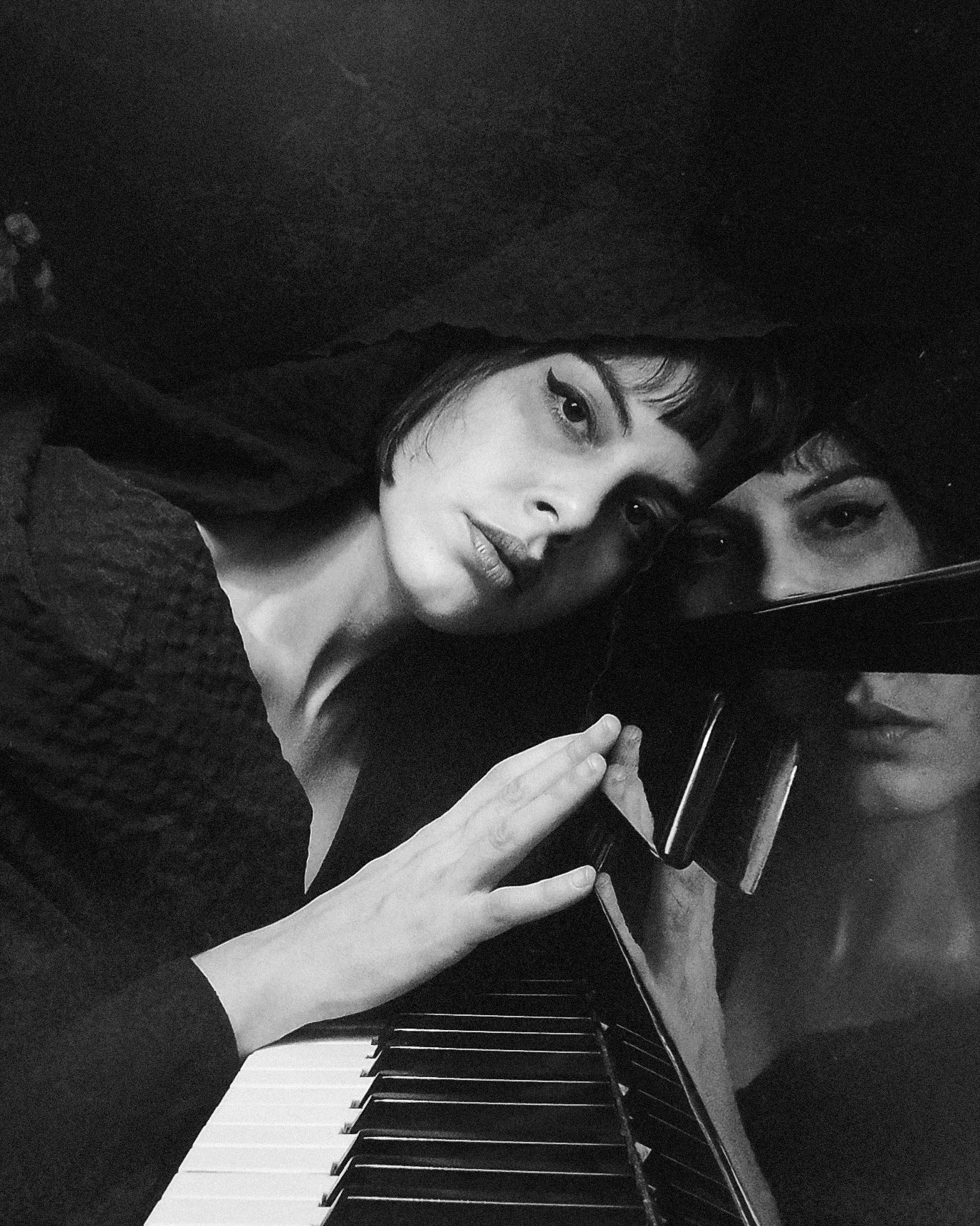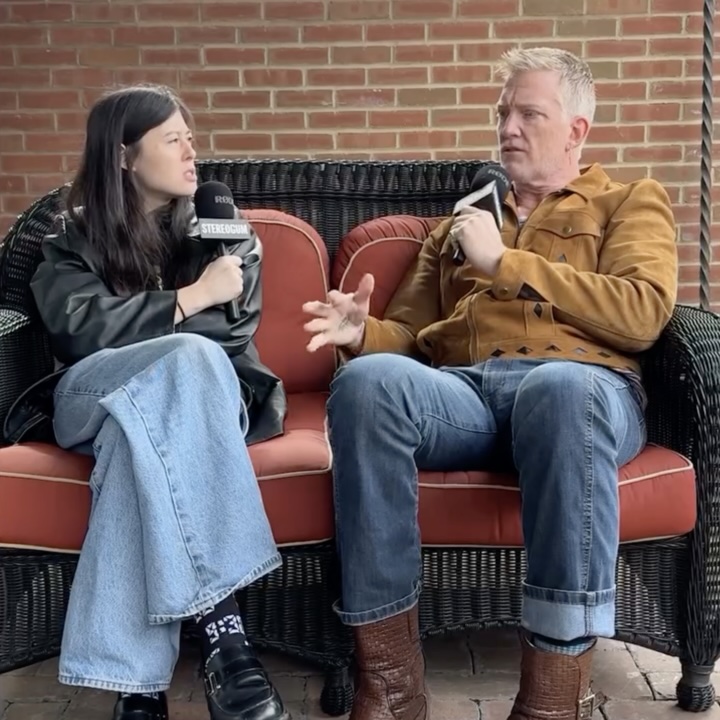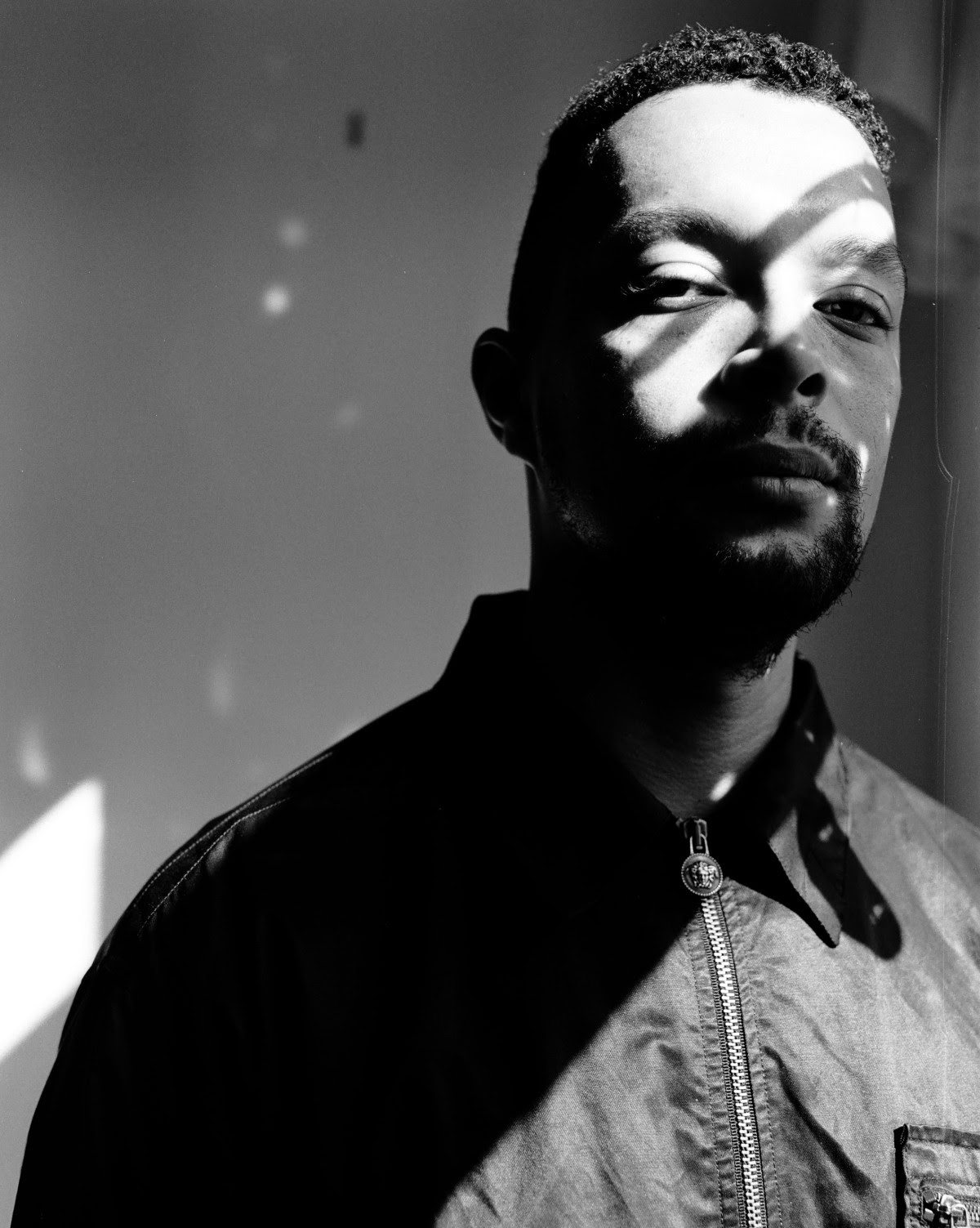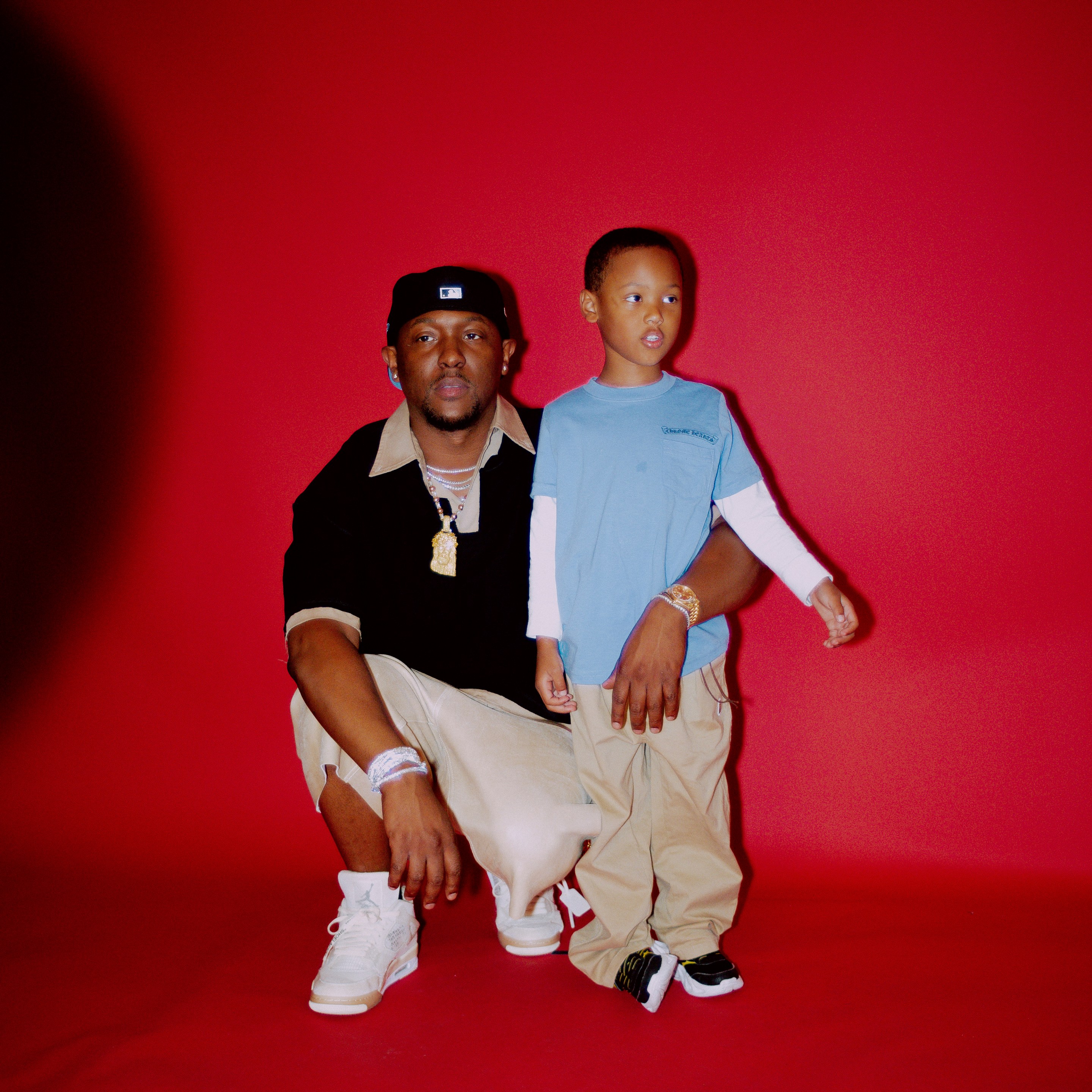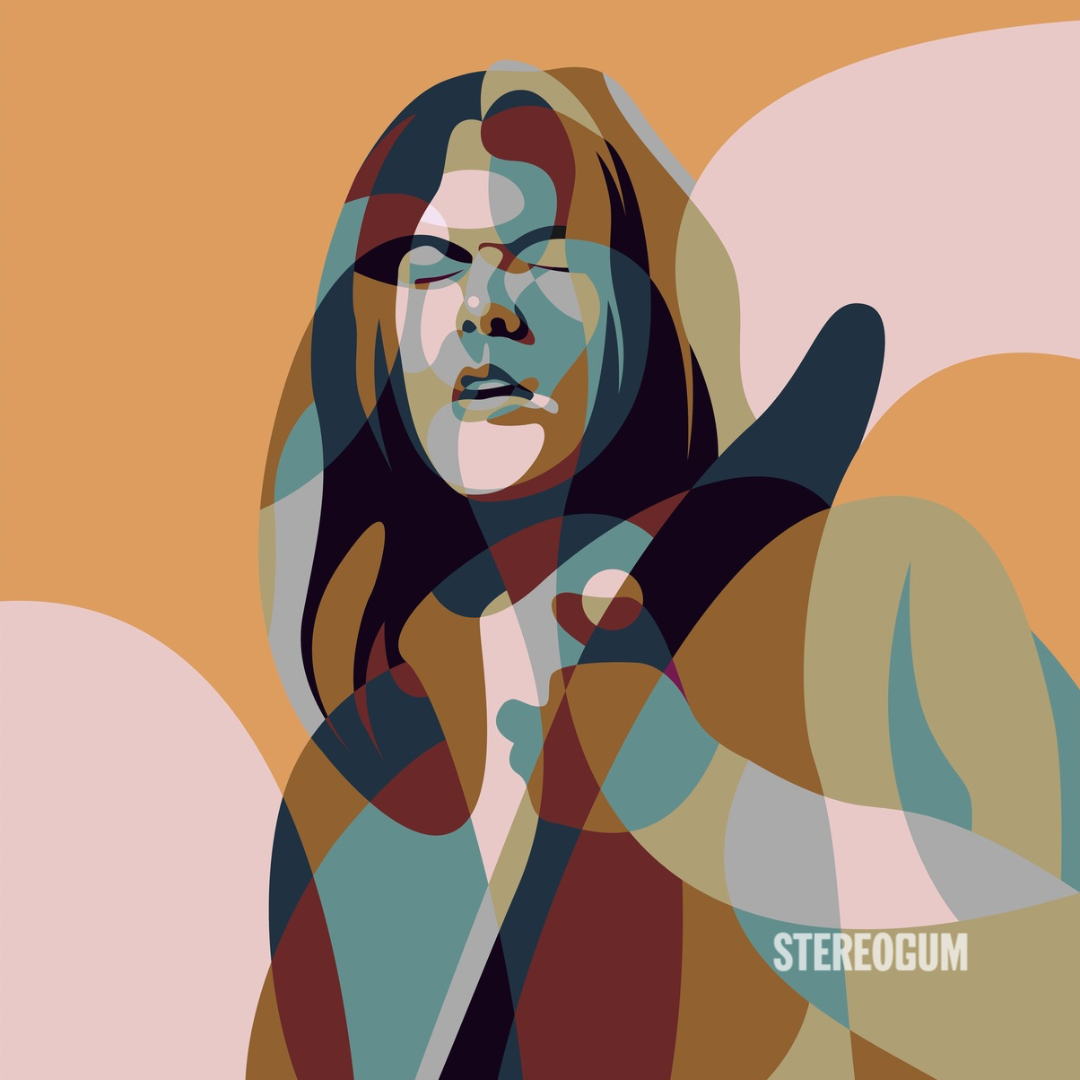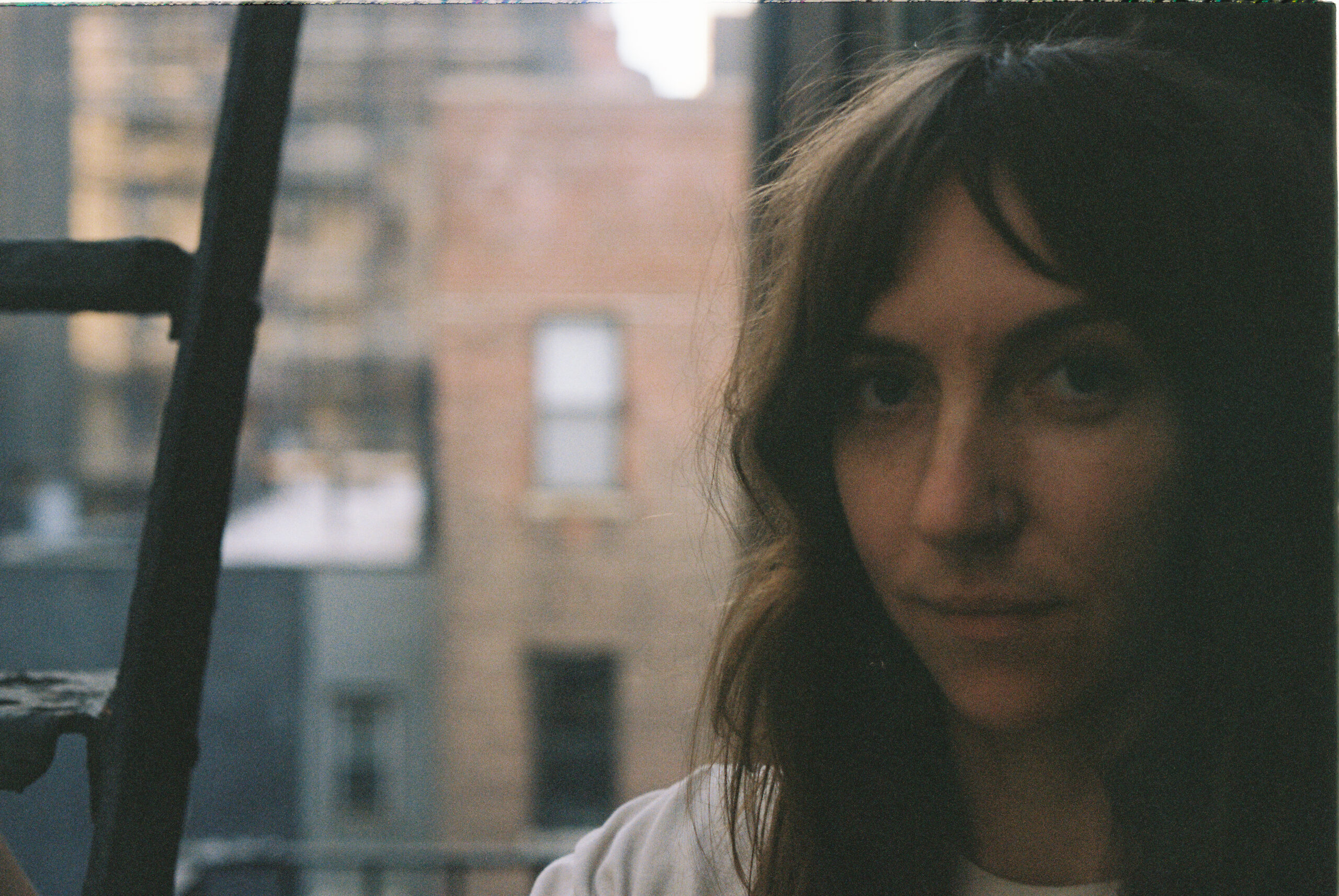When Gang Gang Dance emerged from New York City in the early 2000s, the band's sound was raw, ragged, and raga'd -- a percussion-powered swirl of elephantine hooks and dizzying chants. On dispatches like 2005's God's Money LP and 2007's Rawwar EP -- both via the Social Registry label -- the ululations of lead singer Lizzi Bougatsos helped stitch together thrilling, omnivorous sonic quilts that were much more indebted to notions of "world music" than those of "indie rock" or "freak folk." By 2008's Saint Dymphna and 2011's Eye Contact, a swing towards electronic pop had commenced, with the former's rap-verse laced "Princes" and the latter's face-melting "Mindkilla" asserting that the band had moved beyond the looping, reverb-saturated mysticism of something like "Nomad For Love."
Seven years and a hiatus later, Gang Gang Dance return with Kazuashita, an album that finds Bougatsos, guitarist Josh Diamond, and multi-instrumentalist Brian DeGraw embracing pop, ambient, and New Age. For the first time with this band, the new album flows like a DJ set, with each tune drifting easily into the next.
There's an amniotic undertow tug to creamy advance track "Lotus," while the title track's late-era Brian Eno balm yields to a house pulse that seems to remix itself. The classical gas and political poetry of "( novae terrae )" dissolve into "Salve On The Sorrow," where Bougatsos' coo turns Cubist and Diamond's languorous guitar work recalls the late Portland, Oregon psych-unit Yume Bitsu. The effects-flooded "Too Much, Too Soon" bears an icy twinkle, as though three turns of an enchanted music-box crank could transport listeners to a roller-skating rink where the soundtrack consisted entirely of early Janet Jackson singles. For all the real-word turmoil that helped to inform the making of Kazuashita, spending time with it can be a wonderful way to escape the real world, or to recharge in order to confront it.
In early May, DeGraw, Bougatsos, and Diamond joined Stereogum to discuss Kazuashita, the Standing Rock protest movement, living in Donald Trump's America, and what they've been up to since the last time we heard from them.
[videoembed size="full_width" alignment="center"][/videoembed]
STEREOGUM: Let's start with the title of this record. What does it mean, and why did you choose it?
BRIAN DEGRAW: Our friend Taka Imamura had a baby last year, and Kazuashita is the name of the baby. It has a double meaning; it's not like a direct translation, but it's a weird Japanese play on words, an amalgamation of two different words that then translates to the phrase "peace tomorrow." Taka is sort of a member of Gang Gang Dance, even though he's not really joining us on this one. He appears on stage with us.
STEREOGUM: I had read about him, that to an extent he's kind of like Keith Flynt from The Prodigy -- part of the live presentation more than the music.
DEGRAW: He's behind the scenes more; he's like a spiritual advisor.
LIZZI BOUGATSOS: He's like a vibe equator. On tour, he sort of calms everybody down, and controls the vibe. If someone is upset about something, he'll take them aside and talk to them. Most people know him as the guy onstage who kinda cheers on the band, but he has a nickname, too -- he likes to be called "Baby Love." [laughs]
STEREOGUM: I'm really interested in the artwork for Kazuashita; this is unlike any artwork Gang Gang Dance has had before. Normally you have a drawing, or a photograph of an art piece, and this is a little different.
DEGRAW: I'm a fan of the artist to begin with -- it's our friend David Sherry, who took the photograph. To us, it just fit the mood of the record and the approach, so I think it makes sense that this cover stands out. To me, there's this whole thing about the image; it can be looked at in a couple different ways. You can look at it as a very peaceful image or a very apocalyptic image -- or you can read it as both, simultaneously. That's how I read it, and how I see the world at the moment: caught between these two states, or something.
STEREOGUM: What effects have this era in American history had on the three of you?
JOSH DIAMOND: We're living in very intense times right now, and in the course of us being a band it feels like the whole world has changed. We stepped back for a little while and have come back into making music again… [This era has] had a large effect on me, but I'm not really sure how to explain it.
DEGRAW: The timing of when we kind of took a break was very awkward in terms of all that, for sure. Like Josh said, stepping away at the time we did and coming back at the time we're coming back, it absolutely feels like stepping back into a whole new world in a way. I didn't even have a smartphone when Eye Contact was coming out, or maybe I was just getting one. I don't remember being immersed in social media; I remember still being attentive to the actual world. So that's a huge difference, to say nothing of the political stuff. It feels like we're getting out of prison and re-learning how to function. [all laugh]
DIAMOND: I feel like our generation is unique because we have a foothold in how the world was, and another in how the world is now. I personally still lean into how the world was -- I'm not on social media, certainly, and I never really have been. But the way everything works, it's so different.
BOUGATSOS: When Trump was elected, I'd been upstate a lot. After he got elected, I made a point to be in the city more. I'd talk to people a lot. I'd join action groups. I think there was this sort of desperate need to communicate. I think that feeling of desperation -- of worrying about your health, or the planet, or the end of the world, or people being killed, sex trafficking, the whole thing -- it made me so upset that I had to be around people. So I actually came back to Babylon -- the city -- and I sort of immersed myself in it to be able to talk to people. There were some particular movements that I felt really, really, really strong about, for example the Standing Rock movement, because I have some Native American tribe blood in my family and we really honor that ancestry. Every single move matters, no matter what you do. You have to treat people equally. I think I've always felt that way, but now I'm super-conscious of trying to be extra kind and making sure nobody's feelings are hurt. We're on alert, all the time.
STEREOGUM: We're awake. In a lot of different ways. I didn't wanna say "woke," that gets said way too much -- but, you know. [all laugh]
DEGRAW: Thank you.
BOUGATSOS: The record really does feel like it's a reflection of this time because we are all on red alert. I don't even know how Kellyanne Conway or Sarah Huckabee Sanders can look in the mirror every day; I don't know how they can face themselves.
STEREOGUM: Kazuashita feels political, but also feels smooth and mellow without being completely mellow. What was the process of making this album like in comparison to making something like Eye Contact or Saint Dymphna? When did you start making this, and what was the process of making it like?
DEGRAW: It was really a different process, because we were all in different places through the whole thing, until close to the end. Compared to Eye Contact -- that was all about living together in a studio for a month straight and having some things that we'd already been playing live that we then made into finished songs. This time, we hadn't been playing live at all. I wrote a lot of stuff on the sequencer that became the skeletons of the songs, but even when we were in the studio, it was much less about improvisation in general. When we were in the studio and tried improvising, it didn't seem to be the core of anything this time; we worked off of these things that were already written. So that was really different for us because normally it's all based in improvisation, then going to a studio and hashing everything out, shifting through it, editing it, and turning it into more finished pieces. This was the first time we kinda didn't do that.
BOUGATSOS: We had a lot of different writing stages, which were pretty organic, but it would start in a studio upstate, and would move to Hudson, and then Queens, and then downtown Brooklyn, and then finally East Williamsburg. But it was organic -- as they moved from studio to studio where we were living, the songs kept changing with each place.
[videoembed size="full_width" alignment="center"][/videoembed]
STEREOGUM: The new album sounds very focused; I know I said "smooth" before. Listening back to the prior two albums and Kazuashita, it felt like Saint Dymphna was the record where you made a kind of a shift from experimental rock to experimental pop. I remember being a little worried when that happened. I like it a lot, though it took awhile for me to get used to the change. But I feel like it makes more sense now, when listening to this trio of records as a complete phase. Was this shift a conscious one, or unconscious?
DEGRAW: I think it was a little of both, really. It had a lot to do with the difference in the process of making it. I remember wanting to make a record that was prettier -- a more focused thing that relied more on beauty than on being wild or experimental or continuing any patterns of the past. In the past the music was very rhythmically based -- it was very percussive. But I definitely remember making a conscious effort to configure the arc of the record as one piece of music, rather than playing all these little songs and figuring out how to make them one piece. I was thinking a lot about the sequencing and the mood rather than having whatever material we happened to have dictate that. This time I definitely wanted to be more aware of the mood beforehand.
BOUGATSOS: I think we wanted the music to sort of speak for itself, rather than address a political situation. We wanted it to be a reflection of beauty -- that ambient element of the whole sound of the record is sort of a reflection of the times and the way we want there to be peace tomorrow. There is definitely something about the sound of this piece as its own piece as a reflection of what we'd like to see things as. There's a lot of emotion in this record. In the past we didn't really dive into emotion that much.
DIAMOND: I've always tried to dive into music emotionally, personally. [all laugh] One of the things that I've always wanted in music is that it have a form of reaching for something, for some better place. You can get that with music. It is mellower, it is softer, and there is a narrative; it's not really about any of the single songs. It works as a whole piece of music -- which is something we've always tried to do, but this one really came together for me personally when it was finally in a sequenced form. That's when everything made the most sense to me.
STEREOGUM: It's got a great flow to it. And a lot of times I'll listen to it and think "wow, that particular song is great, and then I'll realize, no, this is the next song, it's just kind of carried over." It's very impressive.
DEGRAW: There was a point during one of the recording sessions when the pieces were less concise. The pieces were pretty long and stretched out, like 10-15 minute pieces of music. We talked about doing it as a three or four sided LP -- a one song per side kind of thing. No titles, just these long expanses of music. That obviously didn't happen, but I think a little of that carried over as best we could in terms of bringing that feeling into more of a pop thing.
STEREOGUM: Especially within this three album span, with every album you're bringing on more guest vocals. With this one you've got more guests than ever. The two that really jumped out at me were one on "J-TREE" that sounded like something from a pipeline protest, and then another one from "( novae terrae )" that sounded like poetry. Can we talk about the guest vocalists -- who they are, and how you decided to bring them into Kazuashita?
BOUGATSOS: In the past, when we started playing live shows, we had a lot of guest vocalists. At our shows we'd be handing out the microphone and songs would get recorded and later released -- our Hillulah album, for example. The guest vocalists were, for me, a way to address the fact that Gang Gang Dance has always been this community thing. That's part of the drive of why we still play together; it's always been about all the other people in our lives as this sort of driving force. It's a nice nod to the past.
The speakers on Kazuashita are especially close friends of ours. Shiyé Bidzííl, whose voice you hear on "J-TREE," is part of the Standing Rock movement. I was following the movement compulsively during the whole duration of Standing Rock. I was in the studio when we were making that song, and I was so affected by that recording; there was this amazing moment when the buffalo showed up, a whole stampede of buffalo, and it just made me cry. I was so sad that I couldn't be there; I especially wanted to be there at Thanksgiving, but I just didn't have the gear or any money and I didn't know what I could contribute. I feel like I probably didn't go so I could make this song.
DEGRAW: I think that that particular vocal is relevant to the underlying narrative of our record, because it's this glorious moment in the face of this horrible thing that was occuring. It's just a reminder that nature always wins.
STEREOGUM: And nature is really important to Gang Gang Dance, right? That's a theme that's surfaced in your songs over the years.
DEGRAW: It's very important, a very relevant theme. That's what I was doing the whole time we weren't playing -- living in the mountains, trying to understand my relationship to nature better.
BOUGATSOS: I think if we had a religion, nature would definitely be our religion.
DEGRAW: There's little samples and stuff, but the other two main guest vocalists -- in the intro to the album's title track, the speaker is our friend Oliver Payne, who's a really great artist. He has a history of doing stuff in the past with us, as well; he made a video that was a bonus track on a DVD we made a long time ago ("GGPbyOD," from 2007 multi-media release Retina Riddim) and travelled with us a bunch. That little passage is just him reading off a list of colors, and that actually ties back into what Lizzi was saying about having guest vocals live in the past. The reason that I asked him to do that is because I was remembering a show that we played at The Cooler where Oliver had a microphone and was hiding behind one of our amps, reading off a list of colors. I always loved that; when I remembered it, I envisioned it making sense in this part of the song. The last color he reads is the name "Kazuashita," so I wanted it to come across as if the baby was this new color. Our friend Jack Walls reads the poem towards the end of the record.
BOUGATSOS: Jack is the best storyteller in New York City! He has this great voice, and he's so animated. He was a big figure in Brian's and my life for a long time. He dated Robert Mapplethorpe, and was his last lover before he passed away.
DEGRAW: He has amazing stories, from the span of his whole life, really. Being gay in the '70s in itself was pretty rough, but being a gay teen in a Chicago street gang must've been an entirely different thing.
BOUGATSOS: He was also the "iconic black male" in all of Mapplethorpe's photographs.
DEGRAW: Well, not all of them.
BOUGATSOS: Most of them!
DEGRAW: He gets confused with another guy a lot, and he gets bummed about that.
BOUGATSOS: He's a poet and an artist, and he lives upstate where Brian and I spend a lot of time. Literally, there was no one we'd spend time with but him. I actually did a performance with him in Hudson.
DEGRAW: Actually, we both did. I played piano, right?
BOUGATSOS: Yeah, Brian played piano.
DEGRAW: I lived with him in Chelsea in the city for a couple years, until the place we were living in burned down.
STEREOGUM: Of all the songs on this album, which one surprised you the most in terms of how much it changed between the initial version and the final version?
DEGRAW: Am I allowed to have two?
STEREOGUM: You can have two!
DEGRAW: The title track morphed into a very different thing. There's this loop that goes on underneath this whole song -- initially that was it, we were just jamming on that loop. We were totally content jamming on that loop for 20 minutes; it sounded so beautiful. We were really confused as to how we were gonna deal with that because we were so happy with those 20 minutes. Eventually it got whittled down into what it eventually became, but it's drastically different. The other one, for me, was the song "Too Much, Too Soon." That was a completely different thing, in almost every sense, before; there was this working version we stayed on for a really long time that had a complete different beat and really obvious choral samples that it revolved around, and it was very electronic-y, like Araabmusik -- I don't wanna say dub-steppy, but it started as that and then had this weird ballad in the middle. Slowly, every part was being replaced and by the end none of the original parts were even there. Maybe the vocals were the same? But hardly anything else.
DIAMOND: That one had a complete transformation, and we made that when we were all together. We worked on it for so long -- we played that one live, in Hudson, just the three of us at some point.
DEGRAW: That was definitely the one that flipped the most.
DIAMOND: A lot of things flipped, though, even some things that didn't make the record. A lot of songs transformed, then they transformed themselves to be off the record. [everyone laughs]
BOUGATSOS: ["Too Much, Too Soon"] started out as a sort of euphoric, Enya-like song and then it ended up like an Edie Brickell song.
DEGRAW: The working title was "Enya" because it had choral samples that were all floaty and New Age-y. It went through so many different phases. I always just refer to it as "the 4AD song," since it reminds me of old 4AD.
BOUGATSOS: In the beginning, the lyrics were very angry. It was during the "pussy-grabbing" time, so I was definitely attacking it vocally, like somebody who didn't wanna be pushed around, and I was just sort of -- I was having dreams of myself as Beyonce, just pushing people out of the way. It was really weird.
STEREOGUM: The song that jumps out the most for me is "Young Boy (Marika in America)." That's the song I hum the most from this album.
DIAMOND: That's one that originated from improvisation.
BOUGATSOS: I wrote the words for "Young Boy" after watching I AM NOT YOUR NEGRO. Originally, the lyrics had straight quotes [from the movie] in it, but it changed. I crazily identified with the film and was so moved that I carried around my notes from the film with me and a poem by James Baldwin the whole time I was writing for this record. Another story that broke my heart was Kalief Browder and how his mother died of a broken heart. There are so many, like Eric Garner. I believe Erica, his daughter, died of a broken heart, too.
Also, at the time when I was writing the lyrics, there was a young girl who got beaten up at a pool around Hudson, New York. That was definitely in my head. It's definitely a song about the wrong people getting shot, and the wrong people being in Heaven. It's a song about innocence and youth and the fact that police should not shoot children.
STEREOGUM: There was a seven-year stretch between Eye Contact and Kazuashita. What led you to take this break? I know life sometimes calls for that.
DEGRAW: I mean, that's really it. Without getting into too much detail, I think it's important to have patience -- and if we didn't feel like making a new record, we shouldn't. There's no reason to force it. Sure, time runs out -- you get older, time passes. I'd rather know that we want to do something rather than feel like we have to do something because of this timeline pressure. It's harder to survive -- that definitely made itself apparent in my life, and I'm sure in everyone else's. We were just in a weird place where I don't think it would have been wise to ... we had lineup changes, as well, that were confusing, and all kinds of stuff.
BOUGATSOS: I also think that at a certain point, you have to take a break and have some new experiences that you can bring back to the music as an offering. We just needed some time for personal projects. Brian and I are both visual artists; anything that the three of us would do on our own we could bring back to the band, and that's pretty important.
DEGRAW: Honestly, it blows my mind that it was that long. I think that shows how not-so-conscious we are of that time pressure in general. I don't remember within that seven years being really anxious about it. We were working on this album for 2-3 years, so really it was five years between the last album and when we started Kazuashita. I can't believe how quickly the time passed.
STEREOGUM: What are some of the things you did during the hiatus?
BOUGATSOS: I put out a record on MOMA PS1 Records, and have a show at the gallery that Brian and I both show at, the James Fuentes Gallery. I made a lot of art -- I was basically working on my art career and solo music, and performances in general, and writing a lot. I played a lot with my girl band, I.U.D. I went to Taiwan with Danny Perez for a film festival; we had a great performance there. Brian and I went to [the late sound art sculptor] Harry Bertoia's farm in Pennsylvania, and got to play with all of his metal sculptures and see a lot of his studio, where he lived. Brian made a film of me recording in there; that was pretty magical. I think [Bertoia] really seeped into this record somehow; in action, his sculptures made me think of monsoons.
[videoembed size="full_width" alignment="center"][/videoembed]
DEGRAW: [Harry Bertoia's farm] is amazing.
BOUGATSOS: It's mind-blowing. I also melted an ice cube at MOMA, as a performance! With my hand! [laughs]
DIAMOND: I made a lot of music that hasn't come out, but maybe it will at some point; I haven't really assembled it into a record, but it's something that I would like to do. I started to play solo shows a year ago, which is interesting; I've lived in New York for 22 years and I've played music my entire life but in my time in New York I hadn't played on my own.
DEGRAW: I did my [solo] record, which I don't really wanna talk about --
STEREOGUM: It was a good record, Brian!
DEGRAW: Thanks, thanks -- regardless of my feelings about it, it was something I needed to do, but I'm not that fond of it in the end. I feel like I spent a lot of my time listening to music, rather than making it, just having the time to gain a different understanding about it. Sometimes music becomes this noise. I was in the mountains. I want to say I did a lot of art stuff, but I didn't, really. I made that record (2013's SUM/ONE, under the name bEEdEEgEE). I slowly got back into the practice of making art. I did a couple art shows, but they were smaller things. I was gardening a lot, educating myself about sustainable building techniques, and learning how to grow food. Quitting cigarettes -- that requires about 90 percent of your attention. Rebooting, you know?
STEREOGUM: Returning to "J-TREE" for a moment, one of the great things about that pipeline protest sample is that it puts these protests back on people's radars. Since this election, there's so many things going on that it's easy to forget about events in the recent past. Personally, I hadn't thought about these protests for quite a while, until I heard that sample.
BOUGATSOS: I love to hear that, because it was one of the most monumental protests in history. The idea behind it was so pure and so natural. Obviously, there are other movements -- but this is such a majestic movement.
DEGRAW: This seems like the first time in my life when I've noticed the general population being conscious of the idea of the human frequency -- the power of the mind and the power of positive thinking. That's always been more of a thing for New Age people, sort of on the periphery of things. But now is the first time in our country's culture when it seems like it's becoming ingrained in people's psyches that our frequencies are powerful, and can create change.
DIAMOND: There's a lot of energy right now that's directed in a positive way. There's a lot to protest as well, but I feel like with young people in particular, there are a lot of people who are making their voices heard.
//
Kazuashita is out 6/22 via 4AD.
